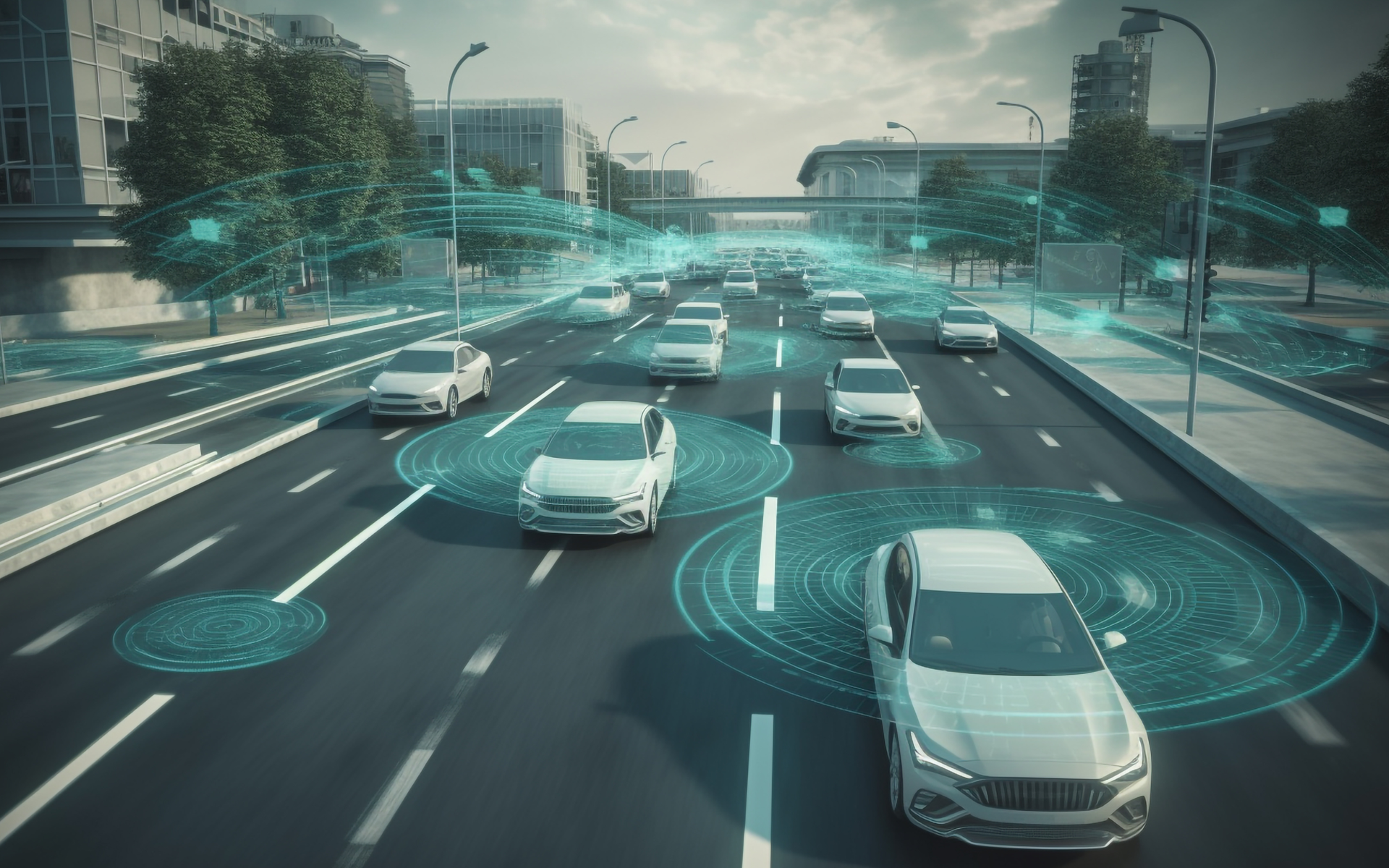MDR vs. EDR: Which Cybersecurity Solution is Right for Your Organisation
Traditional security measures are no longer sufficient to protect against advanced persistent threats, ransomware, and zero-day exploits. As a result, many businesses are turning to advanced security solutions like Endpoint Detection and Response (EDR) and Managed Detection and Response (MDR) to bolster their cybersecurity posture.
While both EDR and MDR aim to enhance threat detection and response capabilities, they differ significantly in scope, management, and operational approach.Understanding these differences is crucial for organisations to make informed decisions about which solution best aligns with their security needs and resources.
In this comprehensive guide, we'll delve into the intricacies of EDR and MDR, compare their features, advantages, and limitations, and provide insights to help you determine the most suitable option for your organisation.
Understanding Endpoint Detection and Response (EDR)
What is EDR?
Endpoint Detection and Response (EDR) is a cybersecurity technology focused on monitoring and securing endpoints—such as laptops, desktops, servers, and mobile devices—against malicious activities. EDR solutions collect and analyse data from endpoints to detect suspicious behaviour, provide real-time alerts, and enable security teams to investigate and respond to threats promptly.
Continuous Monitoring
Continuous monitoring is a cornerstone of EDR solutions, enabling real-time visibility into all endpoint activities, including file access, process creation, network connections, and user interactions. This proactive surveillance helps identify abnormal behaviour or unauthorised access patterns that could indicate a security threat.
By continuously tracking system events, EDR tools can recognise signs of malicious activity early, often before they escalate into full-blown incidents. This 24/7 oversight reduces dwell time and allows for immediate investigation and containment. With the rise of remote work and distributed networks, continuous monitoring ensures consistent protection across all organisational endpoints.
Data Collection and Analysis
EDR solutions gather vast amounts of telemetry data from endpoint devices, including logs from operating systems, applications, memory usage, and user behaviour. This data is then analysed using machine learning, rule-based detection, and heuristic models to uncover suspicious patterns. By building a behavioural baseline, EDR tools can flag deviations that might suggest a compromise, such as an unusual login time or unauthorised access to sensitive files. Historical data analysis also plays a crucial role in post-breach investigations, allowing teams to trace the origin and progression of an attack. This thorough analysis supports both immediate detection and long-term security improvements.
Threat Detection
EDR solutions excel in detecting both known and unknown threats through advanced behavioral analysis, threat intelligence integration, and anomaly detection. Known threats are identified using signature-based detection, while unknown or zero-day threats are uncovered using behaviour-based techniques that flag suspicious activities, such as lateral movement or privilege escalation. Threat detection engines continuously update with threat intelligence feeds to remain effective against emerging attack vectors. These capabilities allow organisations to stay ahead of adversaries, minimising the chances of a successful breach. Real-time alerts and contextual data ensure that threats are not just detected but also prioritised for immediate response.
Incident Response
When a threat is detected, EDR tools empower security teams with built-in incident response features to contain and neutralise it quickly. Analysts can remotely isolate infected endpoints, stop malicious processes, delete suspicious files, and initiate automated remediation actions. This rapid response minimises the blast radius of an attack and limits operational disruption. Some EDR platforms also provide guided playbooks or automated workflows that streamline complex responses. Additionally, detailed forensic data collected during the incident helps security teams understand the attack path, determine root cause, and reinforce defenses against future incidents. Incident response through EDR thus enhances resilience and reduces downtime.
Integration with SIEM
Many EDR platforms are designed to integrate seamlessly with Security Information and Event Management (SIEM) systems, enabling centralised log aggregation, correlation, and analysis across the broader IT environment. This integration enhances the overall security operations center (SOC) visibility by connecting endpoint activity data with network, server, and application logs. SIEM correlation rules can help detect coordinated or multi-stage attacks that may not be obvious from endpoint data alone. Furthermore, EDR-SIEM integration allows for improved compliance reporting, better alert prioritisation, and a unified response strategy. By combining detailed endpoint insights with a macro view of the IT landscape, organizations gain stronger threat detection and response capabilities.
Advantages of EDR
Granular Visibility
One of the standout benefits of EDR is its ability to deliver granular, endpoint-level visibility into every action taking place within an organisation’s IT environment. Security teams can monitor file executions, registry changes, network communications, and user behaviours in real time. This depth of visibility is crucial for identifying subtle indicators of compromise that might otherwise go unnoticed. It also provides the contextual information necessary to understand the full scope of an attack how it started, what systems were affected, and how it propagated. With this level of insight, organisations can make more informed decisions about threat mitigation and future prevention.
Rapid Response
EDR empowers organisations to respond to threats at machine speed, reducing the time between detection and containment. When suspicious behaviour is detected, EDR tools can execute predefined response actions such as quarantining a device, terminating a process, or blocking a malicious IP address. This agility is critical in today’s threat landscape, where delays in response can lead to data breaches, operational disruptions, and financial loss. Automated and remote response capabilities also mean that geographically dispersed organisations can contain threats without the need for on-site intervention. Rapid response not only limits damage but also helps maintain business continuity.
Forensic Capabilities
EDR platforms provide extensive forensic tools that allow security teams to conduct thorough investigations after an incident. These capabilities include capturing and storing detailed endpoint data such as process histories, command-line arguments, memory dumps, and user session logs. Forensic analysis helps determine the attack vector, scope of impact, data exfiltration, and root cause. This evidence can be crucial for legal, regulatory, or compliance-related proceedings. Additionally, insights gained through forensic investigations enable organisations to strengthen their security posture, update detection rules, and train staff on how to prevent similar incidents in the future. EDR thus supports both tactical and strategic cybersecurity goals.
Limitations of EDR
Resource Intensive
Implementing and maintaining an EDR solution often requires significant human and technical resources. The volume of alerts and data generated by EDR tools can be overwhelming without a well-staffed, skilled security operations center (SOC) in place. Analysts must possess expertise in threat detection, incident response, and forensic analysis to effectively use the platform.
Additionally, deploying EDR across large or complex environments can demand considerable IT support for configuration, updates, and integrations. These resource demands can pose a challenge for small to mid-sized organisations or those with limited cybersecurity budgets. Without adequate staffing and planning, EDR can underperform or become a burden.
Alert Fatigue
A common challenge associated with EDR is the high volume of alerts it generates, many of which may be false positives or low-priority issues. Security analysts must sift through countless notifications to identify genuine threats, a process that can lead to alert fatigue and burnout. This fatigue increases the risk of missing critical indicators or failing to act on legitimate threats in time. Over-reliance on default alert settings or lack of proper tuning can exacerbate this issue. Organisations must continuously fine-tune detection rules and leverage machine learning capabilities to reduce noise, prioritise high-fidelity alerts, and maintain analyst effectiveness.
Limited Scope
While EDR provides deep visibility into endpoint activity, its scope is inherently limited to the endpoints it monitors. This means threats that originate or move through network infrastructure, cloud environments, or third-party applications may go undetected. Sophisticated attackers often exploit multiple layers of the IT environment, and an endpoint-only view can miss crucial indicators of lateral movement or exfiltration.
Without integration with broader security solutions like SIEM or Network Detection and Response (NDR), EDR alone may leave visibility gaps. For full-spectrum threat detection and response, EDR should be part of a multi-layered defense strategy that includes network, cloud, and identity security tools.
Understanding Managed Detection and Response (MDR)
What is MDR?
Managed Detection and Response (MDR) is a comprehensive cybersecurity service that combines advanced threat detection technologies with human expertise to monitor, detect, and respond to threats across an organisation's entire IT environment. MDR providers offer 24/7 monitoring, threat hunting, incident analysis, and response support, effectively acting as an extension of an organisation's security team.
Key Features of MDR (Managed Detection and Response)
As cyber threats become more sophisticated and persistent, organisations need more than just tools they need expertise, real-time visibility, and a proactive approach to defence. That’s where Managed Detection and Response (MDR) stands out. Below are the key features that define MDR and why they are crucial to a modern cybersecurity strategy.
24/7 Monitoring
One of the foundational elements of MDR is its around-the-clock monitoring of an organisation’s digital environment, including endpoints, networks, servers, and cloud workloads. Unlike traditional reactive models that rely on manual reviews or part-time oversight, MDR operates 24/7/365 to detect and respond to threats as they occur regardless of the time of day.
This real-time surveillance is supported by automated threat detection technologies, enriched with threat intelligence feeds, and validated by human analysts. Continuous monitoring drastically reduces attacker dwell time the period between compromise and detection which is critical in preventing data loss and system disruption. For businesses without the capacity to build and staff a 24/7 security operations center (SOC), MDR provides an essential service that fills this gap.
Threat Hunting
Proactive threat hunting sets MDR apart from other managed services. Rather than waiting for security alerts to trigger action, MDR teams actively search for signs of malicious behaviour within an organisation's environment. These threat hunters use advanced analytics, behavioural baselines, and threat intelligence to identify stealthy, often overlooked indicators of compromise (IOCs). This includes uncovering dormant malware, lateral movement, and abnormal user behaviour that might not trigger conventional detection mechanisms. By identifying threats early in the kill chain, threat hunters can neutralise risks before they escalate into full-blown incidents. This proactive mindset significantly enhances an organisation’s security maturity and resilience.
Incident Response
MDR isn’t just about finding threats it’s about responding to them with precision and speed. Incident response within MDR includes a structured, expert-led approach to investigating, containing, and eradicating threats. When a security incident occurs, the MDR team acts quickly to analyse the threat, determine its scope, and take immediate action, such as isolating compromised systems, terminating malicious processes, and guiding clients through remediation. Some MDR providers also offer incident response retainers or direct engagement with forensic experts during critical events. The goal is to minimise damage, reduce downtime, and help organisations recover quickly and securely.
Security Expertise
One of the most valuable aspects of MDR is on-demand access to cybersecurity professionals without the cost and complexity of hiring a full in-house team. MDR providers staff seasoned analysts, threat hunters, incident responders, and security engineers who bring years of experience dealing with a wide array of threat scenarios.
These experts continuously monitor your environment, tune detection logic, advise on risk mitigation strategies, and support compliance initiatives. For organisations with limited in-house capabilities, this expert layer significantly enhances the effectiveness of cybersecurity operations and ensures a much faster and more informed response to emerging threats.
Customised Reporting
Every organisation has different needs when it comes to compliance, executive oversight, and operational metrics. MDR providers offer tailored reporting that aligns with your specific industry, risk profile, and regulatory obligations. These reports typically include a summary of threats detected and mitigated, investigation timelines, incident outcomes, and recommended actions.
Reports can be customised for different stakeholders from technical summaries for IT teams to high-level briefings for boards and executives. Some providers also offer dashboards and compliance-oriented reports (e.g., for ISO 27001, GDPR, or HIPAA) to simplify audits and support strategic decision-making. This transparency not only enhances trust but also improves security posture over time.
Comparing EDR and MDR
| Aspect | EDR | MDR |
|---|---|---|
| Scope | Focused on endpoint devices | Covers endpoints, networks, and cloud environments |
| Management | Managed in-house by the organisation's security team | Managed by external cybersecurity experts |
| Monitoring | Continuous monitoring of endpoints | 24/7 monitoring across the entire IT infrastructure |
| Recommended Completion of TranThreat Detectionsition Audits | Detects threats based on endpoint data | Detects threats using a combination of endpoint, network, and cloud data |
| Incident Response | Requires internal team to respond to incidents | Provides expert-led incident response and remediation |
| Resource Requirements | High—needs skilled personnel and infrastructure | Lower—leverages provider's resources and expertise |
| Cost | Potentially higher due to infrastructure and staffing | Often more cost-effective as a service-based model |
| Customisation | High—tailored to organisation's specific needs | Varies—depends on provider's service offerings |
Choosing Between EDR and MDR
In-House Expertise
Choosing Endpoint Detection and Response (EDR) is a strategic decision best suited for organisations that possess a capable, well-resourced internal cybersecurity team. EDR platforms offer detailed data and powerful tools for threat detection, investigation, and response but they don’t operate autonomously.
These solutions require trained analysts to interpret alerts, investigate anomalies, manage incidents, and continuously refine detection rules. If your business has a security operations center (SOC) or dedicated personnel who are comfortable with log analysis, scripting, threat hunting, and forensic tasks, EDR gives them granular control and a robust foundation to work from. Organisations with in-house expertise can maximise the value of EDR by tailoring it to their unique threat landscape and operational workflows, creating a highly responsive and customised defence.
Desire for Control
Another reason to opt for EDR is the organisational need for full control over security operations and tooling. Some businesses particularly in finance, healthcare, government, or other highly regulated sectors prefer to manage security tools directly to align with strict internal policies or governance frameworks. With EDR, your security team controls what is monitored, how data is stored, and how response actions are handled.
This direct oversight allows for a customised approach to security, letting organisations implement specific detection logic, containment strategies, and integrations with other internal systems. For companies with a strong emphasis on operational sovereignty and risk management, EDR offers a level of customisation and autonomy that MDR services may not match.
Specific Compliance Needs
Compliance and data sovereignty can also be key drivers in the decision to implement EDR over MDR. In some jurisdictions or industries, regulations such as GDPR, HIPAA, or data localization laws may require that certain data—especially personal or sensitive information—remain on-premises or within specific geographic boundaries. With EDR, organizations can retain full control over where telemetry data is stored and how it’s processed, which is crucial for demonstrating compliance. Additionally, EDR solutions can often be configured to meet audit and reporting requirements more directly than outsourced services. If your organization must maintain detailed, auditable control of data handling processes, EDR’s flexibility and transparency make it a strong fit.
When to Choose MDR
Limited Resources
Managed Detection and Response (MDR) is ideal for organisations that lack the internal capacity whether it’s people, time, or budget—to build and maintain a 24/7 security function. Hiring, training, and retaining cybersecurity talent is not only expensive but also highly competitive. MDR providers offer a turnkey solution that includes expert monitoring, incident response, and threat intelligence, eliminating the need for a large in-house team. For small and medium-sized enterprises (SMEs), startups, or even larger organisations undergoing digital transformation, MDR is a cost-effective way to implement robust security without overextending internal IT resources.
Need for Comprehensive Coverage
Another compelling reason to choose MDR is the need for holistic, cross-platform coverage. Unlike EDR, which focuses strictly on endpoints, MDR providers monitor across the entire IT ecosystem—endpoints, networks, servers, cloud environments, and even SaaS platforms. This broad visibility is critical in today’s hybrid and remote work environments, where threats can originate from multiple vectors and bypass traditional security boundaries. MDR delivers a unified threat detection and response capability, integrating telemetry from multiple layers to give a complete picture of risk. For businesses aiming to strengthen security posture across digital assets, an MDR solution offers the reach and scalability that EDR alone cannot provide.
Rapid Deployment
Organisations facing immediate threats or those under pressure to improve their security maturity quickly will benefit from the rapid deployment offered by MDR services. Building a fully functioning internal SOC can take months—or even years—and requires a significant upfront investment. MDR, on the other hand, can be onboarded relatively quickly, often within a few weeks. Providers already have the infrastructure, technology stack, and expert personnel in place, allowing businesses to benefit from best-in-class protection almost immediately. This makes MDR a practical choice for organizations dealing with a recent breach, preparing for audits, or undergoing mergers and acquisitions where security risks escalate rapidly.
In the face of escalating cyber threats, selecting the right security solution is paramount. EDR offers detailed visibility and control over endpoint security, making it suitable for organizations with robust internal security teams. Conversely, MDR provides a comprehensive, managed approach to threat detection and response, ideal for businesses seeking to augment their security capabilities without significant internal investment.
Ultimately, the choice between EDR and MDR depends on your organisation's specific needs, resources, and risk tolerance. By carefully evaluating these factors and considering a potential integration of both solutions, you can establish a resilient cybersecurity framework that safeguards your digital assets and supports your business objectives.








